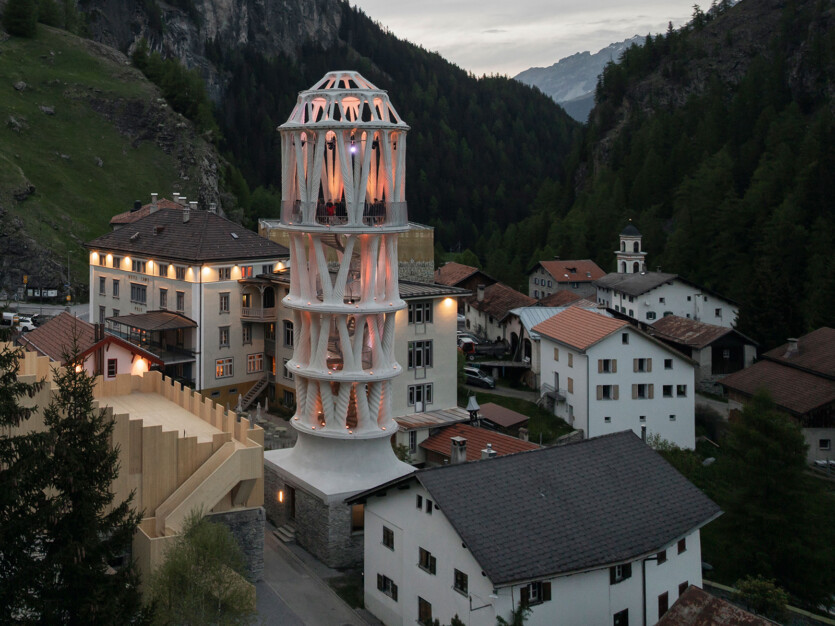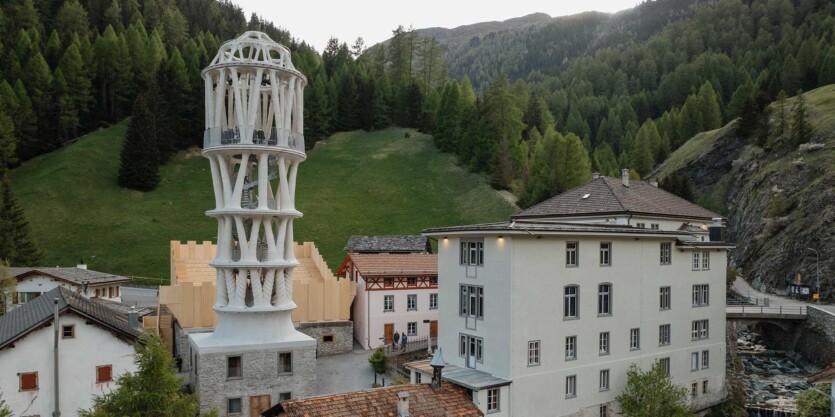
The Swiss village of Mulens has completed the construction of a 30-meter white Tor Alva tower printed on a 3D printer, which has now become the world’s tallest building created with 3D printing.
The tower was built on the basis of a building that had previously been used as a smithy. The authors of the project, which aims to revive interest in the village of Mulėns, where only 11 people, mostly elderly, currently live, are the architect Michael Hansmeyer and Professor of Digital and Building Technologies at ETH Zurich Benjamin Dillenburger.
They designed the tower, which consists of several sections and 32 white concrete columns, and resembles a multi-layered cake. It is noted that the tower received this design in honor of the swiss confectioners who once made the country famous in the world.

Print elements construction lasted 5 months. After that, they were delivered directly to the assembly site. Two construction robotic systems were involved in the tower’s construction — A 3D printer that squeezes out a special cement-like mixture in layers and a machine that installs steel structures.
«Simple one- or two-story houses made by additive manufacturing are nothing new. Tor Alva’s peculiarity is that the elements printed on the 3D printer are load-bearing. During the manufacturing process, a second robot inserts an annular steel reinforcing element into the column every 26 centimeters. The addition of these reinforcing rods allows for the production of complex, branched columns that would be difficult to realize with a conventional concrete process», — the Zurich Federal Institute of Technology explains.
The construction of the tower demonstrated that the construction 3D printing technologies can be used to make support structures without formwork. All elements are connected without glue – using removable screws and cables, which makes it easy to disassemble and reassemble the tower.
The tower will be open for tours starting May 23. The domed top floor is planned to be used for theater performances. It is expected that the tower will stand in Mulença for about 5 years, after which it will be dismantled and reassembled.
Spain has created the world’s first 3D hologram with interactivity — it can be touched and moved
Source: NewAtlas; ETH Zurich

Spelling error report
The following text will be sent to our editors: